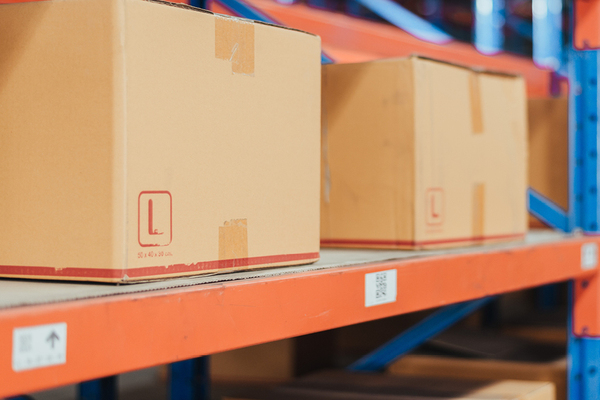
Establishing a minimum order quantity (MOQ) is a business strategy used by brands to generate revenue by selectively building relationships with customers that are able to meet minimum order or volume requirements. Though it may seem counterintuitive to turn down potential business, setting a MOQ can actually help brands bring in higher profits.
What is MOQ?
MOQ is the minimum amount of product a brand is willing to sell to a customer at the time of purchase. It is more cost efficient to sell larger quantities of a product in a single shipment, than what it costs to sell a single unit individually over time.
When should you have an MOQ?
MOQs are implemented to generate profitable sales margins. What does MOQ mean for a brand’s bottom line? They’re mostly used by brands selling products at a minimal markup or items with tight margins since, typically, a large quantity of products is necessary to maximize profits. Every industry and brand has its own calculations to determine its unique MOQ requirement.
How Can Brands Leverage MOQs For Improved Retail Fulfillment?
Leveraging MOQs can improve inventory accuracy, keep costs lower for buyers, and improve profit margin for brand suppliers in the supply chain. Here are specific examples of how establishing MOQs and partnering with a retail fulfillment partner can be beneficial.
Incentivize higher spending on orders
Buyers receive the best pricing per unit when buying in bulk which can make it advantageous when the wholesale supplier implements MOQs. At the same time, it can improve wholesale supplier relationships by negotiating the ideal amount of inventory to benefit both the buyer and the brand.
Eliminate slow-moving or stagnant SKUs
By using an MOQ, retail brands can identify goods that are most profitable based on order amount rather than allocating retail fulfillment costs on stagnant SKUs or products generating low–profit margins. Implementing this as part of a comprehensive retail fulfillment strategy allows brands to scale effectively.
Personal care product company Brio created new sales opportunities by partnering with Flowspace as its retail fulfillment provider. With Flowspace’s network optimization and real-time visibility, Brio’s inventory could effectively be dispersed and fulfilled to create the highest profits versus the limitations experienced previously with a standalone 3PL.
Optimize inventory strategy
What is MOQ used for in an inventory strategy? By establishing a supplier MOQ, retail brands can streamline inventory management vs inventory control and help better predict product orders, inventory, and cash flow. It also presents the opportunity to increase profit margins by limiting reliance on other 3PLs that benefit from the returns of every sale.
When sporting goods company Rukket switched from its sole reliance on Amazon to enable Flowspace fulfillment solutions, the brand experienced a 10% increase in margins for their Shopify and FBM orders and shifted 25% of their orders to higher-margin channels.
Scale based on demand
What does MOQ mean for scaling purposes? A MOQ benefits DTC brands in scaling and/or expanding into retail by creating a solution that’s sustainable enough to handle a steady increase in volume while continuing to deliver the same high quality customers expect.
Subscription-based, tree-free paper company Reel Paper experienced a spike in demand during the initial stages of the pandemic, which required a fulfillment partner that could keep up with the order volume and provide on-time shipments. Once making the switch from a traditional 3PL, Flowspace enabled the brand to scale efficiently and maintain its excellent reputation for customer service and experience.
How To Calculate MOQ
Calculating MOQ varies by brand depending on the product, retailer, and customer base. While there is no catchall formula, there are several key factors to consider in calculating MOQ.
Determine estimated demand
Set a reasonable MOQ by assessing historical order data to help forecast demand. As you learn how to forecast inventory, you may learn that instituting a MOQ that far exceeds the average purchase order may not be feasible and could deter buyer interest. For example, if a vendor typically orders 500 units and the MOQ is set to 5,000, such a significant jump can disqualify regular customers. Also, consider if buying demand is consistent month to month or if it spikes due to seasonality.
Calculate break-even point
There are a few aspects to consider to reach a break-even point to help calculate a MOQ. Estimate market prices and orders and also consider overhead costs, including production, shipping cost, labor, and setup expenses, before settling on a final amount.
Understand holding costs
Stale inventory can affect a brand’s bottom line, and knowing the costs of how much is needed to store items is part of calculating the MOQ. Products with expiration dates or complex packaging specifications can make production inventory management more challenging, and these holding costs are relevant to establishing a profitable MOQ.
Set MOQs
Calculating MOQs requires a delicate balance of generating a steady volume of orders at a profitable return and keeping the MOQ at a fair market price which makes sense for retailers. Once MOQs have been established for each product type, create an implementation strategy to incentivize customers, such as bulk discounts, to help maintain solid relationships. When calculating MOQs, make sure you also know how to calculate safety stock so that your company is able to avoid out-of-stock situations.
What is the difference between MOQ and EOQ and how should retail brands use each?
EOQ or economic order quantity is the ideal quantity of inventory compared to MOQ, which is the minimum order quantity. Finding the balance between the two means benefiting both the supplier and the brand. Therefore, brands often compromise with suppliers to establish solutions favorable to everyone.
Calculating a MOQ is not a set-it-and-forget-it strategy. As the market fluctuates and demand changes, MOQs will need to be recalculated to reflect proper inventory forecasting. Using a retail fulfillment solution like Flowspace empowers brands to make data-driven decisions based on customer analytics to evaluate profit margin, order volume, and other valuable insights to calculate a MOQ that will turn a profit.
Source
- Netsuite. Minimum Order Quantity (MOQ): Formula, Tips, and Benefits. https://www.netsuite.com/portal/resource/articles/inventory-management/minimum-order-quantity-moq.shtml





